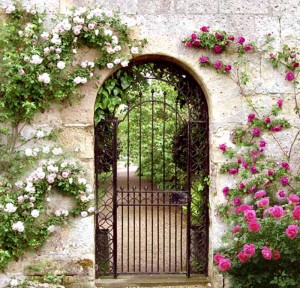 Nature has a way of always surprising us, and this year is no exception. We had a very warm winter with little snow. Snow is the best winter mulch there is, and if it arrives and stays on the ground throughout the cold months, it melts slowly into ground that never quite freezes. Excellent for most plants.
Nature has a way of always surprising us, and this year is no exception. We had a very warm winter with little snow. Snow is the best winter mulch there is, and if it arrives and stays on the ground throughout the cold months, it melts slowly into ground that never quite freezes. Excellent for most plants.
But not last winter! Some of you may find that a few varieties in your flower gardens have died. You did nothing wrong; they died from lack of protection and moisture. This year, spring (or rather summer) arrived in March. All plants responded to the unusual warmth, and then the temperature plummeted to 12 degrees above zero. Twice. This killed or damaged more plants. And then it was dry for weeks. More damage and death. How can we deal with this?
First, we need to expect more weird weather like this from now on, so make sure you buy plants that can take it. Any marginally hardy plant may not like all these swings. Any foliage that is variegated will be less tough than that same plant with ordinary green foliage. Stick with tough plants. There are lists of them on-line, in books and magazine articles.
Second, the USDA says we have warmed to zone 5 in our region, but don’t believe it unless you have a particularly lovely microclimate or live in a village that is not in a deep valley. We can still get to 25 below zero, and temperature isn’t the only condition that affects hardiness. Plants exposed to winter winds, especially north winds, can suffer. Lack of moisture when plants go dormant and the ground freezes can cause suffering, too, as well as too much rain on plants that need sharp drainage. Digitalis (Foxglove), Heuchera (Coral Bells), Dicentra exima and luxuriant (Summer blooming Bleeding Hearts) are just a few that need sharp drainage. Since most of us have clay soils around here, and clay holds moisture, I usually add a big handful of gravel to any planting hole below plants that need sharp drainage. Don’t get me wrong, clay has lots of nutrients. It just needs some help to make it possible for roots to penetrate it. And don’t add sand; it will create concrete when it dries.
Third, when some plants die in the garden, you get to rethink the arrangement and buy more. I had a client once whose husband said that the only thing he disliked about her hobby is that she was always changing things around. I laughed and told him it was what gardeners do. They find out about a new plant they want, so have to rearrange to accommodate the “newbie” Or somebody gives them a bunch of Iris, so the garden has to change. Or a plant has outgrown its spot, or one nearby is crowding, so somebody has to be moved. It’s what we all do; I do it at home myself. I think it’s fun and I just love buying new plants to learn about and enjoy. So think of the problems or holes in your garden as opportunities. Mourn the dead, but move on.
Thinking of good drainage and root growth brings another topic to mind. When planting shrubs and trees, dig wide planting holes. Written instructions provided with plants assume a lot, including what type of soil you are planting in. Since we have clay and rocks here (lots and lots of rocks), dig holes just to the depth of the rootball or pot, but three times the width of the rootball or container. Do not amend the soil with anything like peat moss because those plant roots will eventually hit the wall of the hole and will be better prepared by growing in local soils. Just remove any rocks bigger than your fist, add more soil if needed and plant. Add some rock phosphate, bone meal or even triple phosphate to the planting hole as you fill it in, but no other amendments, especially not nitrogen. Your tree or shrub needs to settle in and grow roots in the first year or two, not be pushed to produce more greenery.
Meanwhile, we are lucky that the early drought seems to have ended. I know rain and then sun and then rain is annoying, but would you want to live in New Mexico?? It is just warming up enough at night to put in tender plants like impatiens and basil, but go ahead. Fertilize well during the rest of the growing season, and most will catch up. Enjoy the beautiful shades of green all around us, and take the point of view of the plant. That alone will get you through.
